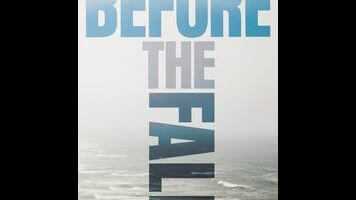Hawley, a novelist and TV writer currently riding a wave of popularity as creator of the Fargo series (ranked third in The A.V. Club’s best television of 2015), works both with and against the conventions of literary thrillers, relying on a keen sense of pacing to sustain a story that withholds its secrets until the end.
The deceased include the powerful head of a Fox-like cable news network and his wife and child; an Israeli bodyguard shadowed by war and danger; a financier facing federal indictment and his carefree wife; a career by-the-book pilot; a Texan hotshot of a co-pilot; and a stewardess edging toward a quarter-life crisis. While weaving together bits of the crash investigation and the aftermath for the survivors—middle-aged painter Scott Burroughs and 4-year-old J.J. Bateman—Hawley digs in turn into each character and the winding roads that brought them together. As with Fargo, Hawley’s novel is driven by a fascination with human reaction to extreme events and the capacity for resilience, and a careful look at what happens when outside forces break people, or merely bend them. Most compelling in Burroughs’ story is what happens after the fall. Does the sudden hero’s fame now his define his life? What of his resurgent art career? Will he ever swim again, or fly in a plane? And to what degree will his life be bound to the now-orphaned J.J.?
Throughout, it’s easy to see the cinematic potential of Before The Fall, in its taut storyline and well-executed jumps in perspective, each main character drawn into focus individually, the backstories filling in as the central mystery pushes forward. Hawley tends to emphasize visual passages, and the world of film frames the way his characters think. “There is a moment in every horror movie that hinges on silence,” he writes, just before an investigator makes a key discovery. “True horror, you see, comes not from the savagery of the unexpected but from the corruption of everyday objects, spaces.”
Hawley’s prose is direct and unadorned, with priority given to the story, so it’s no surprise the author is at his best in moments of high action and rising tension. The book’s strongest passages come in the crash’s immediate aftermath, as Burroughs and the boy struggle to survive not only their plunge into the ocean but the improbable journey to land, and in the pulse-quickening march to the final revelation. The book’s climax plays out as the author cuts between two conversations, one live on television and one recorded from the plane’s cockpit.
The biggest flaw in the novel comes courtesy of a structure that otherwise assists Hawley in his exploration of the chaotic convergences that endlessly impact our lives. All these characters are delivered fatefully together at the moment of tragedy, but in order to hold the cause of the crash as a mystery until the end, backstories of each must be given roughly equal weight. Unfortunately, some of the cast are better drawn than others, with some character sketches nothing more than feints and diversions—interesting but ultimately extraneous to the plot. And the order of those backstory chapters points the reader toward the conclusion anyway.
Before The Fall capitalizes on its propulsive plot, even as Hawley brings other ambitions to bear, examining wealth, media, art, class, desire, and love to illustrate how our lives are determined through a constant struggle between internal and external forces.
